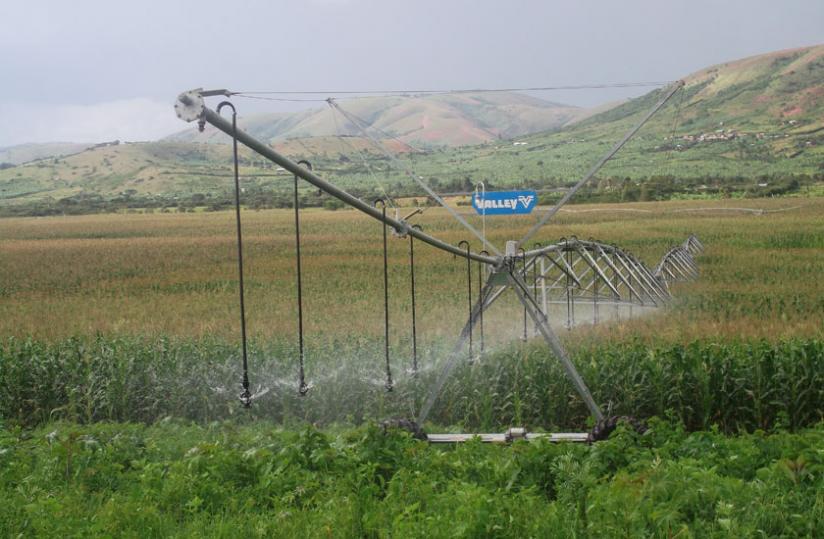Irrigation development in Rwanda is critical in ensuring that the nation attains the set EDPRSII target of 8.5% growth in Agriculture that will in turn boost the overall national GDP. In the preceding year (2014-15), the growth of agriculture has been depressed at 4.5% thus threatening the achievement of the twin goals of poverty reduction and economic growth.


Background
Irrigation development in Rwanda is critical in ensuring that the nation attains the set EDPRSII target of 8.5% growth in Agriculture that will in turn boost the overall national GDP. In the preceding year (2014-15), the growth of agriculture has been depressed at 4.5% thus threatening the achievement of the twin goals of poverty reduction and economic growth.
Rwanda inaugurated the Irrigation Master Plan (IMP, 2010) which clearly identified and mapped 589,000ha of potential irrigation areas in Rwanda. In 2014 Rwanda endorsed an irrigation policy whose main vision is to achieve by 2018, a developed irrigation sector that is sustainable, dynamic, efficient, demand driven which will act as the transforming force in the modernization and diversification of agriculture, thus creating national wealth and food security.
The irrigation policy highlighted the major challenges restricting growth of the irrigation sector recapped as; (i) High cost of irrigation development, (ii) Poor organization in schemes, (iii) Small and fragmented private lands not attractive to big investors, (iv) Inadequate capacity (skills and equipment) within public and private sector, (v) Lack of irrigation culture within communities, (vi) Undeveloped and inefficient marketing chain, Poor water use efficiency, Lack of an irrigation policy and strategic plan for irrigation development, and Lack of clear investment portfolios in irrigation development.


